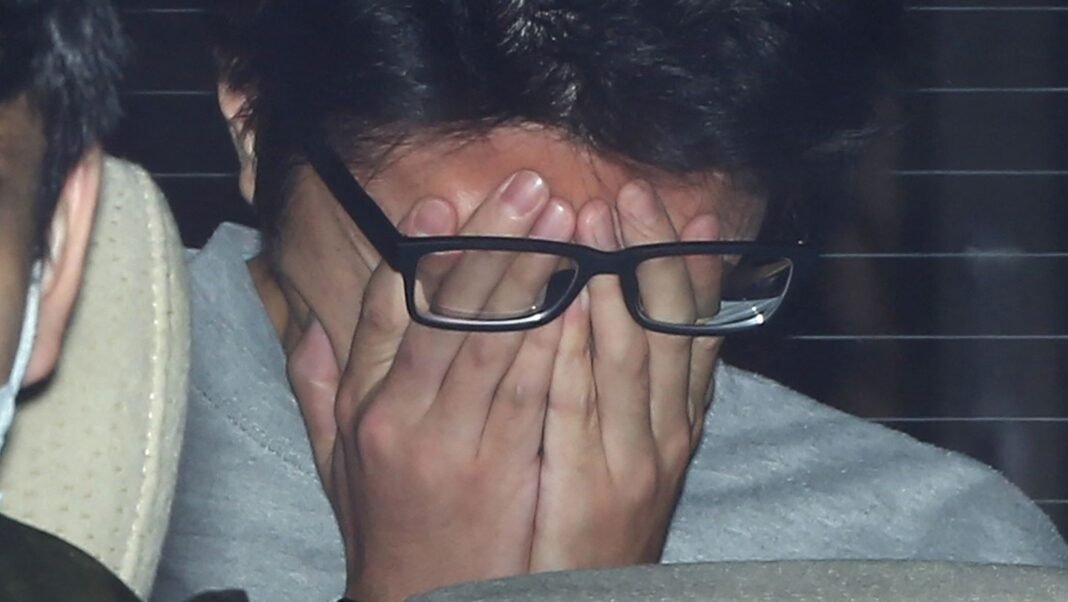
Japan has officially executed Takahiro Shiraishi, a man infamously known as the ‘Twitter Killer’, for the brutal murder of nine people in 2017. The execution was carried out by hanging, making it the first capital punishment carried out in Japan since 2022. Shiraishi, aged 34, had been on death row for several years after being convicted in one of the country’s most shocking and horrifying criminal cases in recent memory.
The execution took place at the Tokyo Detention Center, where Shiraishi had been held in solitary confinement. Japan’s Justice Minister, Keisuke Suzuki, confirmed the hanging, calling the crimes “extremely selfish and driven by sexual and financial motives.” The announcement has sparked nationwide and global attention due to the nature of the crimes and Japan’s long-standing death penalty practices.
Who Was Takahiro Shiraishi and Why Was He Called the ‘Twitter Killer’?
Takahiro Shiraishi earned the nickname ‘Twitter Killer’ because he used the social media platform Twitter to find his victims. He searched for individuals—mainly young women—who were expressing suicidal thoughts online. Shiraishi would then reach out to them, pretending to be a person who could relate to their pain or someone who would assist them in committing suicide painlessly. In reality, his intentions were purely manipulative and murderous.
Shiraishi’s victims believed they had found someone who understood their emotional suffering, but once they entered his apartment in Zama, he strangled them to death, dismembered their bodies, and hid body parts in coolers inside his home. The details of his actions shocked not only Japan but also drew attention from international crime experts and media due to the methodical, cold, and remorseless nature of the killings.
How the Horrific Crimes Were Discovered
The case first came to light in October 2017 when police began investigating the disappearance of a 23-year-old woman who had posted about suicide on Twitter. The woman had been communicating with Shiraishi online. Her brother, who became suspicious, eventually gained access to her social media and tracked her interactions. His persistence led the authorities to the apartment in Zama, located in Kanagawa Prefecture, south of Tokyo.
What the police found inside was beyond imagination. Dismembered human remains, including nine heads and multiple limbs, were stored in cooler boxes and storage containers. The odor, the scene, and the number of victims made this one of the grimmest crime scenes in Japanese history. Shiraishi was immediately arrested, and during questioning, he calmly admitted to the murders.
Details of the Serial Murders That Shocked Japan
According to the official statement by Justice Minister Suzuki, Shiraishi’s crimes were premeditated and brutally executed. He killed eight women and one man, all aged between 15 and 26. He lured them into his apartment, beat and strangled them, robbed them of their belongings, and sexually abused several of the victims, all while documenting his actions.
“Nine victims were beaten and strangled, killed, robbed, and then mutilated with parts of their bodies concealed in boxes, and parts discarded in a garbage dump,” Suzuki said in a press briefing. Shiraishi claimed that he committed these murders not only to satisfy his sexual desires but also to obtain money from the victims. His actions were carried out with a terrifying sense of detachment, according to police reports.
Legal Battles, Death Sentence, and Controversy
Shiraishi’s case went to trial in 2020. His defense lawyers initially attempted to argue that the murders could not be considered illegal because the victims had “consented to die.” However, the court rejected this claim, emphasizing that even if someone wants to die, no one has the right to kill them. The judge ruled that Shiraishi took advantage of emotionally unstable people for his own personal gain and therefore deserved the death penalty.
Shiraishi was convicted of murder, sexual assault, theft, and destruction of corpses. During the trial, he never expressed remorse, which further solidified the court’s decision. The sentence received strong public support, as the Japanese society viewed this as an act of ultimate justice for an unforgivable crime.
Japan’s Death Penalty System and Global Reaction
Japan is one of the few developed nations that still carries out executions. Among the Group of Seven (G7) countries, only Japan and the United States continue to impose the death penalty. The practice remains broadly supported by the Japanese public. A 2024 government survey revealed that 83 percent of 1,800 respondents believed capital punishment is “unavoidable” for heinous crimes.
However, the system has faced heavy international criticism, especially from human rights organizations. Inmates are usually not informed in advance about their execution. They typically learn of it only a few hours before the hanging takes place. Families are not told until after the execution, and prisoners spend years, even decades, in solitary confinement, causing mental health deterioration.
How Execution Happens in Japan
Executions in Japan are carried out by hanging, and they take place in the early morning. The method involves a trapdoor system. Three officers are required to press buttons simultaneously, but none knows who actually triggered the drop. This is done to share the psychological burden of execution.
The lack of transparency, the long periods of solitary confinement, and the mental toll on inmates and staff have been widely criticized by international observers. Yet, Japan continues to stand by its system, arguing that it is necessary for justice and public safety.
The Last Execution Before Shiraishi: The Akihabara Massacre
Before Shiraishi, Japan’s last execution took place in 2022. The individual was Tomohiro Kato, responsible for the 2008 Akihabara massacre. Kato had driven a two-ton truck into a pedestrian crowd and then went on a stabbing rampage, killing seven people and injuring 10 others. His attack was sudden, random, and extremely violent, making it one of the worst mass murders in Japan.
Both Kato and Shiraishi’s cases exposed the dark corners of modern Japanese society, particularly regarding social isolation, mental health struggles, and the lack of intervention before such tragedies occur. These incidents have encouraged the government to strengthen mental health awareness, although many believe there is still a long way to go.
The Families of the Victims Respond
For the families of Shiraishi’s victims, the execution brought mixed emotions. Some expressed relief, saying that justice had finally been served and that their loved ones could now “rest in peace.” Others stated that no punishment could ever undo the pain of losing their child, sister, or friend in such a horrific way.
One parent of a 15-year-old victim told Japanese media, “Our daughter’s dreams were stolen from her. Though this does not heal us, it feels like a chapter has closed.”
The public in Japan widely supported the execution, viewing it as a necessary action for the scale and brutality of the crime. On social media, many people expressed sorrow for the victims and also emphasized the importance of online safety and mental health support.
The Bigger Picture: Social Media, Mental Health, and Prevention
Shiraishi’s case highlighted how dangerous online platforms can become when used by predators. After his arrest, Twitter and other social media companies in Japan faced pressure to increase monitoring of suicidal content and suspicious messages. The Japanese government, too, began focusing more on mental health programs, school counseling, and suicide prevention hotlines.
While steps have been taken to raise awareness, experts warn that many vulnerable individuals continue to suffer in silence. Japan still has one of the highest suicide rates among developed countries. The hope is that tragedies like this will push authorities and society to act more swiftly when red flags appear online or in real life.
Final Moments of Takahiro Shiraishi
According to reports, Shiraishi was calm and expressionless during his final hours. He did not make any final statements or last meal requests. There were no family members present. His execution took place in silence and secrecy, like most capital punishments in Japan.
With the execution now complete, the case of the ‘Twitter Killer’ may be closed legally, but it continues to raise deep ethical, psychological, and legal questions in Japan and around the world.
The hanging of Takahiro Shiraishi, known as the Twitter Killer, brings a painful and terrifying chapter in Japan’s criminal history to an end. His calculated and gruesome murders left a scar on the nation and changed the way people view mental health, social media safety, and criminal justice.
While the death penalty remains controversial, in this case, many feel it was a form of justice long overdue. What remains now is for society to ensure that such crimes never happen again, by building better support systems, watching over digital platforms, and offering timely help to those crying out in silence.































